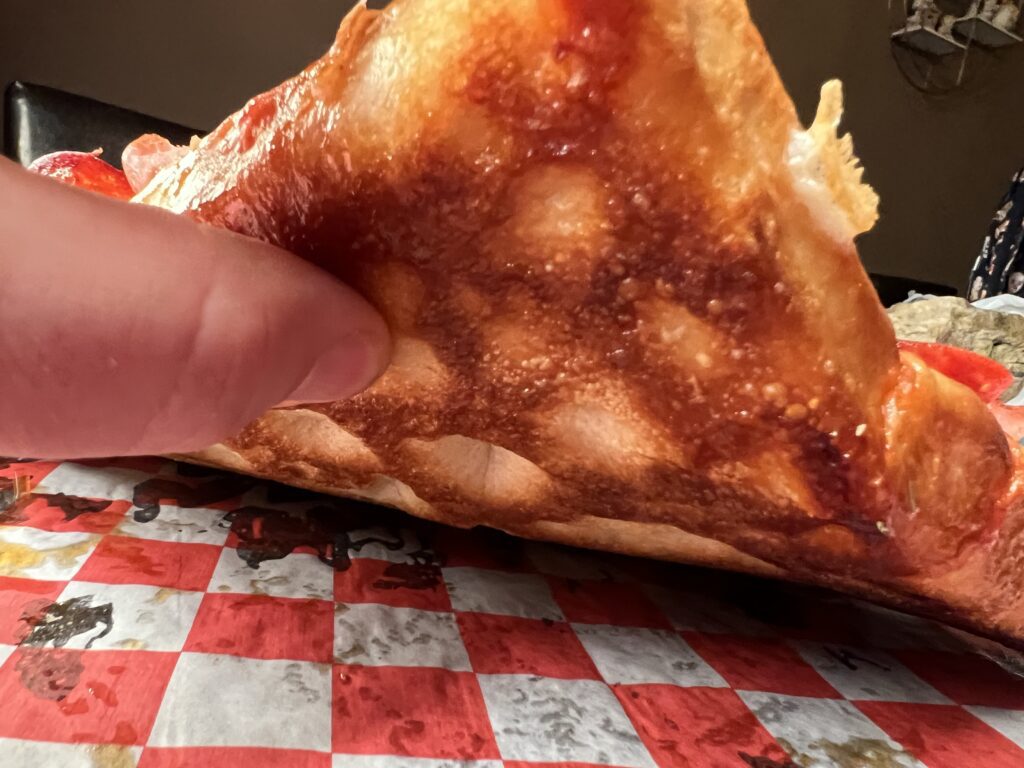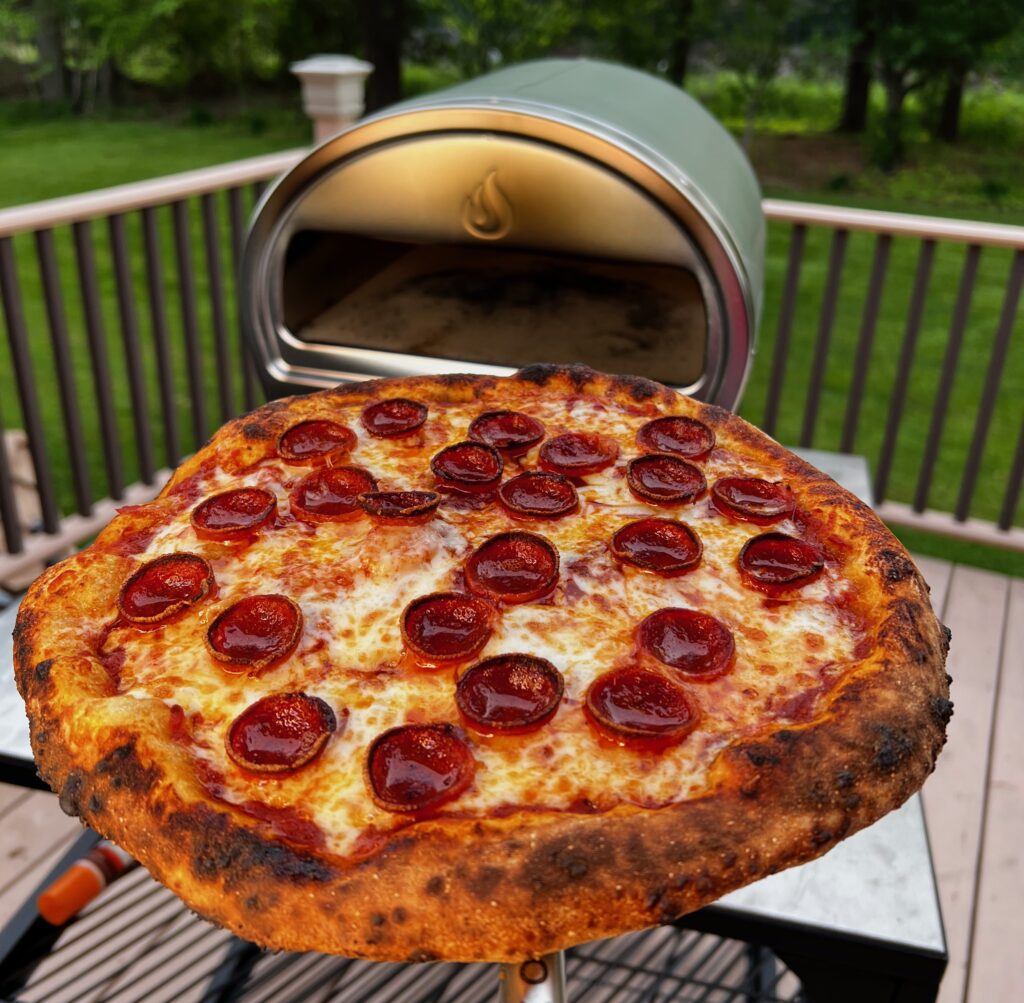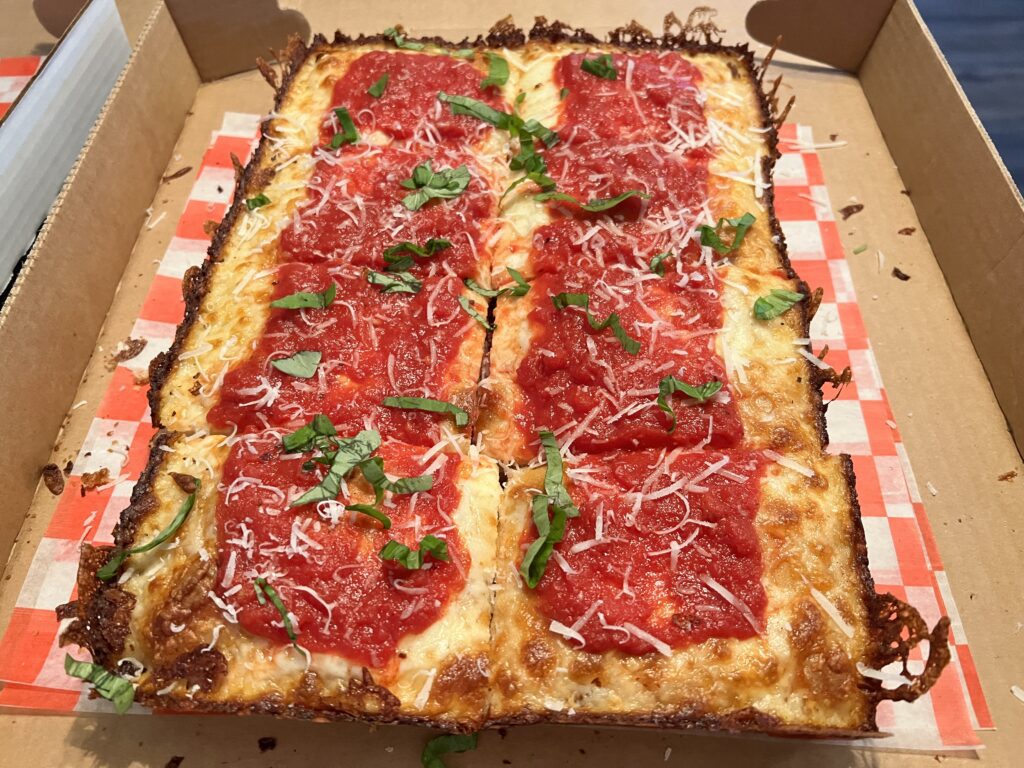This is my Pizza Bible Book Review. You read the title correctly. This isn’t clickbait. The Pizza Bible by Tony Gemignani is the best pizza book I have ever read. I’ll tell you exactly why I feel that way in this article.
First, some quick background about me. My pizza career began working in pizzerias when I was 14 years old. I made pizza professionally for about a decade until I moved on to a different career path. Making pizza at home was something I yearned to do, but became frustrated when I was unable to replicate the type of pizza at home that I had made routinely in restaurants. I started buying pizza books, watching youtube, reading online and really studying to learn how to make better homemade pizza.
One common theme with the cookbooks I had bought, borrowed, or rented at the time was that the recipes were quite basic. Many called for measurements using cups and spoons, dough prep and fermentation instructions were very basic, and those books were really just a compilation of topping ideas. They seemed to lack the “how” and “why” that I was looking for. Then one day I came across The Pizza Bible on Amazon. The bold title and world champion author’s name that I couldn’t pronounce (at the time) spoke to me so I ordered a copy.
First Impressions of the Pizza Bible
It’s been probably 7 years since I purchased my first copy of Tony Gemignani’s book, but I still remember being a little intimidated by it at first. Reading words like poolish, biga, fermentation, diastatic malt and others for the first time had me a little on edge. I leafed through the book checking out the various regional styles of pizza that Tony had provided recipes for. Spotting Chicago deep dish, Sicilian, New York Style, Chicago Cracker thin, and many more got me excited to try some of these recipes.
For my first attempt at a recipe, I elected to avoid preferments (poolish and “Tiga”). I went with the Gemignani’s Master Dough Without Starter recipe. Although using a scale to measure ingredients was foreign to me along with the terms used, I decided to focus on following the instructions exactly. The process was also pretty foreign to me. My usual mixing technique used to be dump everything into a bowl and start the mixer. Tony’s technique is much more technical and he explains why, when, and how to add the ingredients. For example, the recipe calls for water, but the water is added 3 times. First, warm water is used to activate yeast. Then most of the cold water is added to the mix while some is reserved to add later in the mixing process.
Follow the Process and Results Follow
In following the process exactly as spelled out, I noticed immediately that this dough was nothing like the doughs I was previously making at home. It resembled more closely the dough I was working with in the pizzeria! It was supple, strong, smooth, and a pleasure to work with. The first run through was a bit stressful as I acclimated to the new terms, techniques, and processes. On the whole I would not call any of the recipes in this book difficult. The initial challenge comes in digesting the new concepts and terms. Once I became familiar, every recipe thereafter was super simple to use.




Tested Recipes that Produce Consistently Excellent Pizzas
The thing I like most about The Pizza Bible is that the recipes all work very well. The processes, if followed correctly, produce exceptional results in diverse environments. Gemignani’s recipes consider a vast array of variables that can impact a pizza. They are written in such a way that someone with an electric oven using water in Humid Florida can have similar results as someone using a gas oven in New York.
Have you ever used a recipe that just didn’t work? Sometimes it’s not that you didn’t follow the directions. At times it’s because the author lacks sufficient detail in the process necessary to execute the recipe. As a recipe writer myself, I’ve received a ton of feedback from readers over the years who have alerted me to unclear parts of my recipes. The beauty of Tony’s recipes are that these have been tested and proven to work time and again for years. If you read the directions carefully and follow the steps – you won’t believe the amazing pizza results.
The Pizza Bible is on my Ultimate Gift Guide for the At-Home Pizza Maker list! Check it out now!
Pizzeria Quality Results at Home
The Pizza Bible is written at what may seem to be an intermediate to advanced level. However, beginners can quickly gain immense knowledge and experience from it as well. While the book is geared toward making pizza at home, one can easily use these exact recipes to open up a successful pizzeria. Once you use the recipes and learn the methods, you can also adapt the recipes to your liking. A list of ingredients in a regular recipe book is just that. Tony G provides the how and the why each step is necessary. With this knowledge, even a beginner can become well versed in dough making, fermentation methods, a multitude of regional pizza styles, and much more in a short time.
Another great facet of the book is that Gemignani lists variety of his favorite flours, tomatoes, and cheeses to use. Ingredients range from common flours found in supermarkets all the way up to commercial flours used in pizzerias. These high quality ingredients help supercharge your pizza results too.
Here’s an example of how this information immediately and significantly improved my pizzas. In the past, I’d buy any old tomatoes at the grocery store and spend hours adding all kinds of spices and sugars to try to make them into a decent sauce. It didn’t matter what recipe I tried, I never made a pizza sauce I was happy with. Then I used Tony’s New York/New Jersey Pizza Sauce recipe with the tomatoes and simple added ingredients and it blew my mind! I couldn’t believe how simple it was to make an excellent sauce. It starts with great tomatoes – I just needed help identifying them.
Pizza Bible Final Thoughts
If you’re serious about learning how to make great pizza or want to elevate your game The Pizza Bible can get you there. I learned more about what it takes to create great pizza reading this book in a couple of days than I did working more than a decade in pizzerias. I saw an immediate improvement in my pizzas after implementing Tony G’s tips, tricks and recipes. If you don’t believe me, go check the last 10+ years of homemade pizza pics on my instagram page and see how they have progressed in large part because of this book!
So whether you want to make an authentic Chicago deep dish, a thick Sicilian, a Detroit style, or a thin New York style pizza…if you’re looking to to get started making your first pizza or open your first pizzeria…the pizza bible has the technical details, engaging content, and proven recipes that will take your pizza game to the next level.
Have you read the pizza bible? If so, please share your experiences, thoughts, and opinions in the comments!







Jeff jones
February 28, 2023 4:26 pmWhat pizza places did you work at?
nepapizzareview
March 2, 2023 2:24 amA long closed place called Donio’s Pizza back in the day, Dino and Francesco’s, and a couple other in the scranton area.